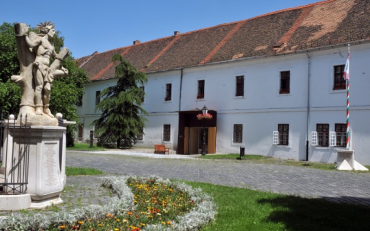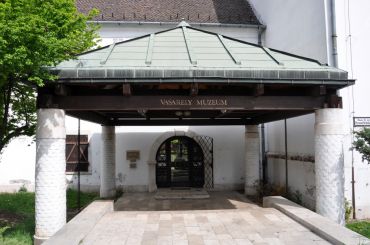Obudai Museum, Budapest

The Obudai Museum (Óbudai Múzeum) is a historical museum located in the Zichy Palace, a beautiful 18th-century mansion in the Baroque style. There are many exhibits of the history of the city of Óbuda, from the period of the Romans to the present days. Fans of history will definitely like its most interesting collection, as it concentrates the whole essence of this oldest district of Budapest.
History of the museum
The predecessor of the modern museum was founded by Edgár Pálóczi after the First World War, in 1927. The museum of settlement history was then called Óbudai Árpád Múzeum, and was located in the premises of the school for boys on Kiskorona utca, 10. Unfortunately, during the Second World War it was completely destroyed.
In 1973, on the 100th anniversary of the unification of Buda, Pest and Óbuda into a single city, the Zichy-kastély was transformed into a community center. In the same year, and all for the same reason, the Historical Exposition of Óbuda was opened in it. Between 1973 and 1994, it functioned as part of the Óbuda Cultural Center. In 1994 it became an independent institution, and already in 1996 it was named Óbudai Museum by the Ministry of Culture of Hungary.
In 2007, the municipality of Óbuda adopted a decision according to which on April 1, 2008 the museum and the Platán library were merged. Within the framework of the concept aimed at the development of modern history, in 2010 the museum opened a new permanent collection called "Óbuda – Three Faces of the City".
Exhibitions of the museum
The historical museum of Óbuda is a link between contemporary and centuries-old traditions of the local population. For city dwellers and tourists, it suggests plunging into local history and culture through unique exhibits and informal training programs for different ages.
The permanent exposition "Óbuda – egy város három arca" is designed to show the visitor the connection of different epochs of the city development in the light of the way of life of that time. Interactive elements of the exhibition affect the four senses (sight, hearing, touch, scent) and also provide an opportunity for creativity. The permanent exhibition is divided into 3 parts:
- The period from the 10th to the 17th century. Then Óbuda was the capital of the Hungarian kingdom.
- The period from 18 to middle of the 20 century. The era of active industrial development of the city, in which the family of Zichy played a huge role.
- Present period. Here you can see the modern history, imprinted in photographs and films.
In addition to the permanent exhibition, the museum shows many items from different eras, which are grouped into separate collections. Some of them were bought by the museum, some were donated by local residents.
- Collection of furniture. It includes about 200 items of the 19th and 20th centuries. The most valuable example is the bedroom (bed and bedside tables) of the mansion István Kőszegi of the early 20th century, made of mahogany in the Art Nouveau style.
- Collection of technical devices. It contains items of different time intervals: scales, washing and sewing machines, irons, vacuums, typewriters, cash registers, clocks, turntables, radios, televisions, cameras. The oldest are wooden washing machines.
- Collection of glass, ceramics and porcelain. Here you may see items made out of the mentioned materials, which were used both for industrial production and for household use.
- Collection of crafts. Here are the items that artisans used in this area.
- Textile collection. Among the exhibits there are many different clothes, shoes, household items and even flags and symbols of the era of socialism.
- Numismatic collection. There are about 800 exhibits collected by the Hungarian historian and coin collector László Birk. The subjects of political and cultural activity are also interesting, there are about 300 of them.
- Music collection. Musical instruments from different eras, as well as the memory hall of the famous pianist from Óbuda Andor Földes.
- A collection of kitchen utensils.
- "Collection of stone". Here are the remains of Roman cobblestones, products of brick factories of the 18-19th century, as well as slabs of the 19th century showing the water level in the Danube.
How to get there
The museum is located in the historical center of Óbuda, just behind the Arpad Bridge, on Fő tér, 1. Entrance is situated from Szentlélek tér. In addition to the Óbudai Museum, the Zichy-kastély also houses the Victor Vasarely Museum and the Lajos Kassak Museum. You can get there by tram, routes 1, 17, 19, 41. Routes of buses – 34, 106, 134, 137, 901, 918. Also nearby there is a stop of the suburban train H5. In all cases, go out at the stop Szentlélek tér H.
Opening hours: from 10:00 to 18:00, Monday is a day off.
Admission: the cost of an ordinary ticket is 800 Hungarian forints, with a discount – 400 forints. The family ticket costs 2000 forints, group (from 10 people) – 600 forints for 1 visitor. For children under 6 and pensioners over 70 the admission is free. Data of February 2018.




